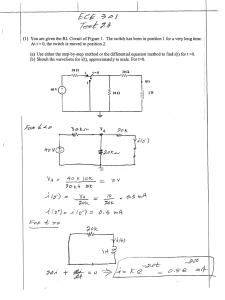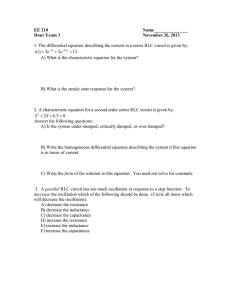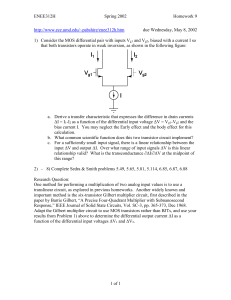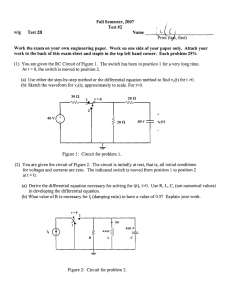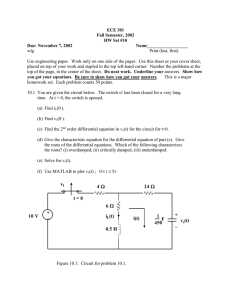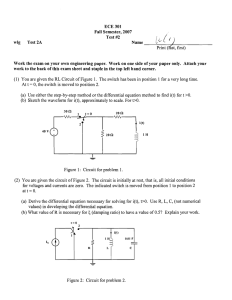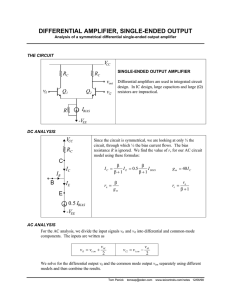1 a 2.
advertisement
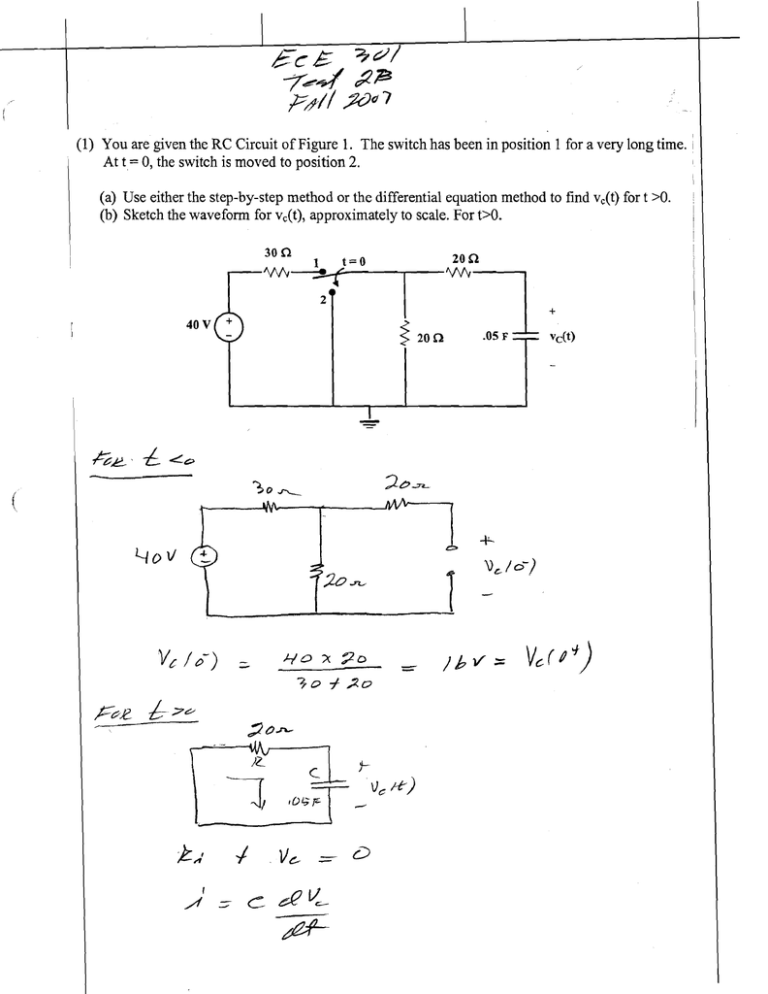
I (1) You are given the RC Circuit of Figure 1. The switch has been in position 1 for a very long time. At t = 0, the switch is moved to position 2. I I 1 (a) Use either the step-by-step method or the differential equation method to find v,(t) for t >O. (b) Sketch the waveform for v,(t), approximately to scale. For t>O. 1 1i j -tC V' , lo-) i (2) You are given the circuit of Figure 2. The circuit is initially at rest, that is, all initial conditions for voltages and currents are zero. The indicated switch is moved from position 1 to position-:! at t = 0. (a) Derive the differential equation necessary for solving for i(t), t>O. Use R, L, C, (not numerical values) in developing the differential equation. (b) What value of R is necessary for 5 (damping ratio) to have a value of 0.5? Explain your work. , I (3) The circuit of Figure 3A is initially at rest, that is, initial conditions are zero. The switch is closed at t = 0. The resulting current through the inductor is shown in Figure 3B. Using the graphical information from the current response and your knowledge of RL circuits, determine the following. Be sure to explain your work. (a) Determine the value of the resistor R shown in Figure 3A. . F. (b) Determine the value of VS,the s~~ in 3 w 3 (4) Consider the series RLC circuit shown in Figure 4. The switch has been open for a very long time and is closed at t=O. t=O Figure 4: Circuit for problem 4. I Using certain values for R, L, and C, the differential equation for i(t) is (a) Which of the following should be used to solve for i(t)? Explain your answer. I I II I 1 i(t) = e-5t[ K ,cos 8.667t + K2 sin(8.66711 -----------------... 1i I (b) Give (determine) the following: 1

